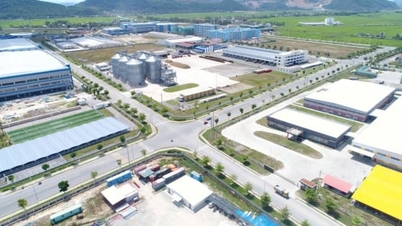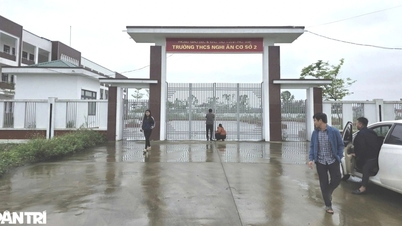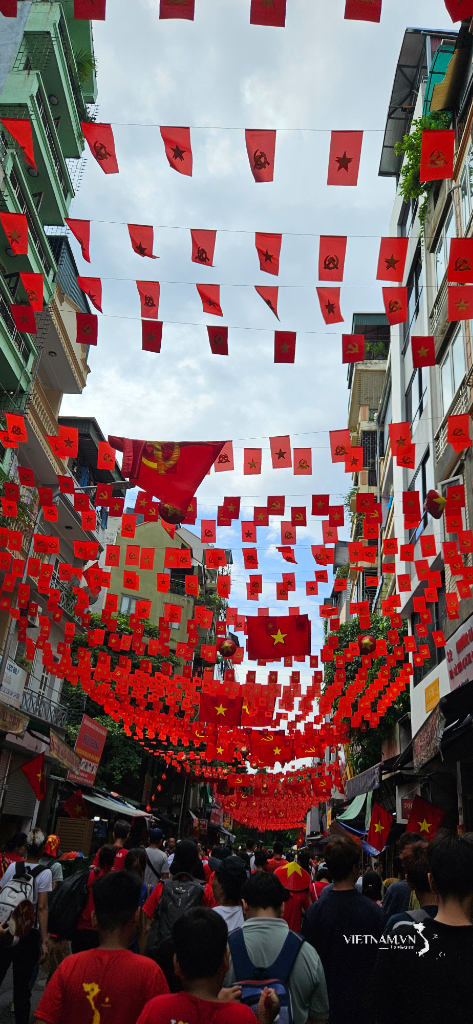Vegetables are expensive, but small traders say it's difficult.

In the past two weeks, the prices of green vegetables in the province's traditional markets have increased sharply. At Hung Dung market, Ga Vinh market, Quan Lau market or other markets in residential areas, popular vegetables have increased 2-3 times, sometimes even 4-5 times compared to the beginning of the month. Water spinach from 7,000-10,000 VND/bunch has now increased to 15,000-20,000 VND/bunch; mustard greens and bok choy have increased from 15,000 VND/kg to 30,000-35,000 VND/kg; herbs that were only a few thousand VND per bunch are now 8,000-10,000 VND.
Some herbs such as perilla, Vietnamese balm, green onions... are so scarce that retailers have to collect them in small bundles. Ms. Nguyen Thi Mao, in Hung Nguyen Nam commune, shared: "Normally, only 20,000 VND is enough to buy vegetables for a family of 4. Now, 50,000 VND is enough. And vegetables after the storm are not as fresh and delicious as before, and the quality is also worse."

Not only are prices high, the amount of vegetables coming to the markets is also limited. Many vegetable stalls of small traders have very few items, and the vegetables are crushed and must be sorted and discarded before being sold. “The prolonged heavy rain has caused many vegetable growing areas in the province and the southern provinces to be heavily flooded. Vegetables are soft and spoil after just a few days of flooding. The supply from other provinces is almost cut off. Many places in the province have not yet reproduced, so there is not enough fresh vegetables to supply,” said Thu Mai, a small trader at Vinh wholesale market.
Prices have increased sharply but purchasing power has decreased. Consumers are cautious, prioritizing moderate purchases, choosing easier-to-preserve varieties instead of buying them out of habit. Many families have had to change their eating habits, switching to long-lasting tubers such as potatoes, pumpkins, and chayote.

This puts more pressure on small traders as they have to bear both high input costs and worry about unsold goods. “I used to buy 30-40 kg of vegetables every day, now I only dare to import half. If I buy too much, I'm afraid I won't be able to sell it in time, and the vegetables will spoil, which means I'll lose money right away. Prices have increased but profits are not better, sometimes even worse because of loss, few customers, and deserted markets due to the continuous rain,” said Hong Thuy, a trader at Quan Lau market.
Some retailers even admitted that they had to flexibly import more vegetables from hydroponic models, greenhouses, and net houses, even though the prices were higher, but in return, the quality was guaranteed and they did not spoil quickly. According to forecasts, it will take at least another month for the green vegetable market to stabilize again when the weather is favorable and growing areas resume production. During this time, people are advised to prioritize seasonal vegetables and tubers, choose reputable points of sale to ensure safety and limit the risk of price fluctuations.
Farmers are excited about good vegetable prices.

In contrast to the quiet atmosphere at the market, in the vegetable fields of Quynh Van commune, the production pace is still bustling. Thanks to the high terrain, fast drainage, plus proactive protection and care, the people here still maintain the winter vegetable area. In the field of hamlet 9, bundles of green mustard greens and rows of lush Malabar spinach are continuously harvested. Ms. Nguyen Thi Sang took the opportunity to collect vegetables in time to supply to traders, saying: "Sweet mustard greens are 7,000 VND/bunch, Malabar spinach is 12,000 VND/bunch. As soon as they are cut, traders take them all. This crop, my family earned nearly 5 million VND per sao, even though it rained a lot but we still had income, so I am very excited."
In the high garden of Mrs. Ho Thi Lan's family, the Malabar spinach is lush green, she takes advantage of the harvest to sell to traders when the price of vegetables increases. She happily said: "Usually, I can only sell 4,000-5,000 VND/bunch, now it is double, triple. Clean vegetables grown in the garden are very popular with traders, before I had to sell retail. Now vegetables are rare, buyers all call to order in advance, I have to prioritize acquaintances."

Not only consumed in the province, a large amount of Quynh Van vegetables are also transported to the South by traders. Ms. Nguyen Thi Minh - a collector said, every day collects more than 5 tons of vegetables of all kinds: "Due to scarcity, to catch up with the trucks, we have to mobilize more manpower to collect right at the field. The vegetables here are of good quality because of the fertile soil, and organic fertilizers such as humus and compost are used, so customers like them. As soon as they are collected, the trucks go to the South to import them all."
Mr. Le Van Hue - Chairman of the Farmers' Association of Quynh Van Commune said that the whole commune has dozens of hectares of vegetables of all kinds, distributed both in the fields and interspersed in people's gardens. "The high terrain helps drain water quickly. We instruct people to cover and drain water in time to minimize damage. At this time, the supply is scarce, the price of vegetables is good, people are more motivated to produce. Sweet cabbage is 6,000-7,000 VND/bunch, Malabar spinach is 12,000 VND/bunch, herbs are 5,000 VND/bunch, and Malabar spinach is 9,000 VND/bunch".

With increasingly extreme weather conditions, proactively developing safe growing areas, flexible covering and irrigation systems have become urgent requirements. At the same time, it is necessary to promote planning of concentrated vegetable areas, develop models of net houses, greenhouses, apply hydroponic technology, organic production... to reduce natural disaster risks, ensuring a stable source of vegetables for the market. At the same time, increase the connection between farmers - cooperatives - enterprises for sustainable consumption, avoiding the situation of "good harvest, low price".
Source: https://baonghean.vn/rau-khan-hiem-do-mua-lu-mot-vung-trong-o-nghe-an-boi-thu-nho-chu-dong-tieu-ung-10310272.html


![[Photo] Ho Chi Minh City Youth Take Action for a Cleaner Environment](https://vphoto.vietnam.vn/thumb/1200x675/vietnam/resource/IMAGE/2025/11/04/1762233574890_550816358-1108586934787014-6430522970717297480-n-1-jpg.webp)

![[Photo] The road connecting Dong Nai with Ho Chi Minh City is still unfinished after 5 years of construction.](https://vphoto.vietnam.vn/thumb/1200x675/vietnam/resource/IMAGE/2025/11/04/1762241675985_ndo_br_dji-20251104104418-0635-d-resize-1295-jpg.webp)

![[Photo] Ca Mau "struggling" to cope with the highest tide of the year, forecast to exceed alert level 3](https://vphoto.vietnam.vn/thumb/1200x675/vietnam/resource/IMAGE/2025/11/04/1762235371445_ndo_br_trieu-cuong-2-6486-jpg.webp)
![[Photo] Panorama of the Patriotic Emulation Congress of Nhan Dan Newspaper for the period 2025-2030](https://vphoto.vietnam.vn/thumb/1200x675/vietnam/resource/IMAGE/2025/11/04/1762252775462_ndo_br_dhthiduayeuncbaond-6125-jpg.webp)






































































































Comment (0)